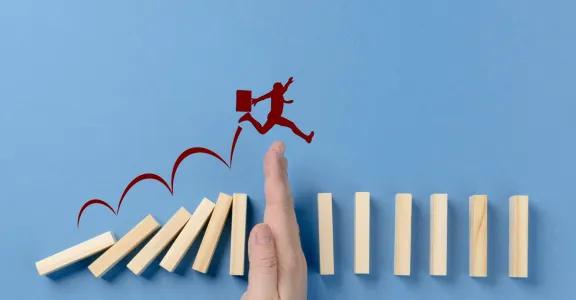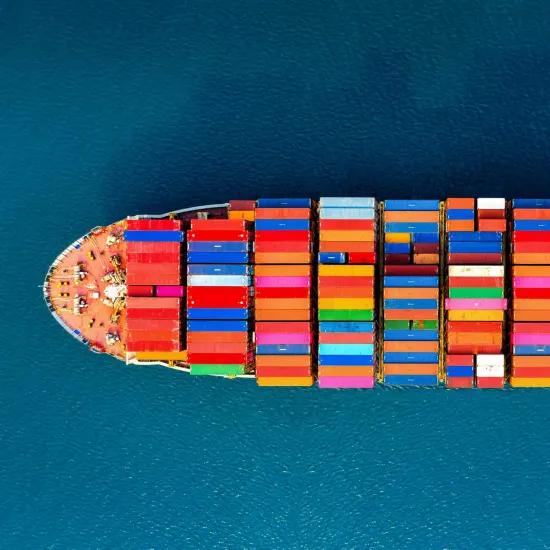Removing Circular Economy hurdles - blog 1
Sustainability and circularity are mentioned more and more in procurement specifications. Every company active in the technology & manufacturing industry notices this. But that does not mean that sustainability sells easily. Nor do clients automatically choose circular products or services. How do Circular Economy front-runners tackle these challenges? How to make circular solutions attractive to clients?
Sirris and Agoria have started a series of blogs, that will provide some insights from front-running companies in the circular economy, derived from the Agoria-Sirris Learning Network CE Connect for the technological & manufacturing industry. During the Executive Exchange session in April 2023, the C-level management from the network shared its insights and lessons learned in a panel discussion with Atlas Copco, Signify, BSH, conTeyor & Barco. The panel’s insights are reflected in a blog series: 'Removing Circular Economy hurdles'.
“Clients are not willing to take the risk to have a long-term commitment to a supplier”
That was the challenging quote presented to participants during the circular economy panel discussion. Is there a ground of truth in it?
Clients don’t buy sustainability
Although sustainability is increasingly part of the buying mentality of companies, they are not buying circularity or sustainability as such. This is a customer paradox that makes things difficult for suppliers today.
Companies primarily buy products and services to solve their problems, work more efficiently and get better functionalities.
On top of that, circular products or business models have an additional challenge: as circularity focuses on lifespan extension, this requires a long-term commitment, which is difficult for companies. Also, for clients it is not easy to make long-term commitments as they want to avoid a lock-in because of rapidly changing technologies, changing design requirements and the fear that a long-term commitment will prevent them from enjoying competitive prices.
Reduce the risk for clients
There is no standard solution to the challenge posed by this customer paradox. As a solution, the panellists advise prioritising the focus on the client’s needs: “First of all, your offer must make sense from a business point of view. Moreover, if your product or service is sustainable or contributes to circularity, that is an added value.”
Ideally, the perceived risks from the client’s perspective are reduced. These perceived risks include high service costs, upgrade costs, financing costs and the risk of being stuck with outdated technology. Relieving these concerns through services and financial transparency also helps.
“Find the sweet spot where both customer and supplier benefit,” advises Gert Roeckx, Country Manager of Signify. “In our LaaS (Light as a Service) contracts, our output base commitments help convince clients to enter into 10-year contracts. Because, among other things, we guarantee them a lower risk of upgrade and service costs, offer them financing solutions and enable future adaptations to the design, components and software.”
Bruno Vermoesen, Head of Brussels Office for Environmental Governmental Affairs at BSH, says: “Focus on the benefit for the end customer and the company. Offer different choices, with a focus on a good customer relationship. Also, offer to collect products at the end of their life cycle.”
Open ecosystem and focus on the entire value chain
In addition, it helps to have an open offering where clients can choose from different solutions based on open technology, such as open APIs, interchangeability, and upgradeability.
Guy Van Wijmeersch, Director Innovation & Design Thinking at Barco, mentions: “It is important to have an open ecosystem and also to understand why an offer is not adopted. By looking into the value chain, we can address some blind spots. Don’t try a one-size-fits-all approach. But roll out a diversified offering with a clear strategy for value creation. Divide the risk between you and your customer.”
Mapping your value chain and stakeholders can help you to better understand the relationships between actors. This also makes it possible to identify clients’ spoken and unspoken desires. For example, do you know why clients do not accept a particular offer? Frequently, the reasons for a “no” are not clear. Companies often do not understand who makes this decision: the end user, the owner, the contractor or the distributor.
Train sales and marketing
Our panel recommends using business intelligence, customer insights, and sales and marketing colleagues to maximise customer and planetary benefits. Total cost of ownership (TCO) and carbon emissions calculators can help to show a different perspective to clients. For example, how can your product-service combination contribute to the customer’s KPIs or the ambition of another stakeholder in the value chain?
This requires a different approach from sales and marketing: instead of selling more and more products, they need to consider the long-term total cost of ownership. Prepare them for this approach. Teach them to adapt and train them. Update procedures to respond to the changes. This sales transformation is not always evident, but it plays a crucial role. Implement the right incentives that contribute to circular KPIs. For example, shift the commission on sales to a commission on services, calculate subscription models, work out TCO and CO2 simulators, and so on.
The sales team should learn to understand the ecosystem in which it operates and to respond accordingly. “It was essential to include sustainability goals in the internal KPI of sales staff in order to bring our company closer to the challenging circularity goals,” says Bert Derom, President Portable Air Division at Atlas Copco. “My advice is: build models and dashboards, so you have the right insights to act upon! Make sure to focus on products that are critical to clients’ business.”
|
How do you deal with this challenge, and what did you learn so far? Feel free to provide your insight related to this topic!





